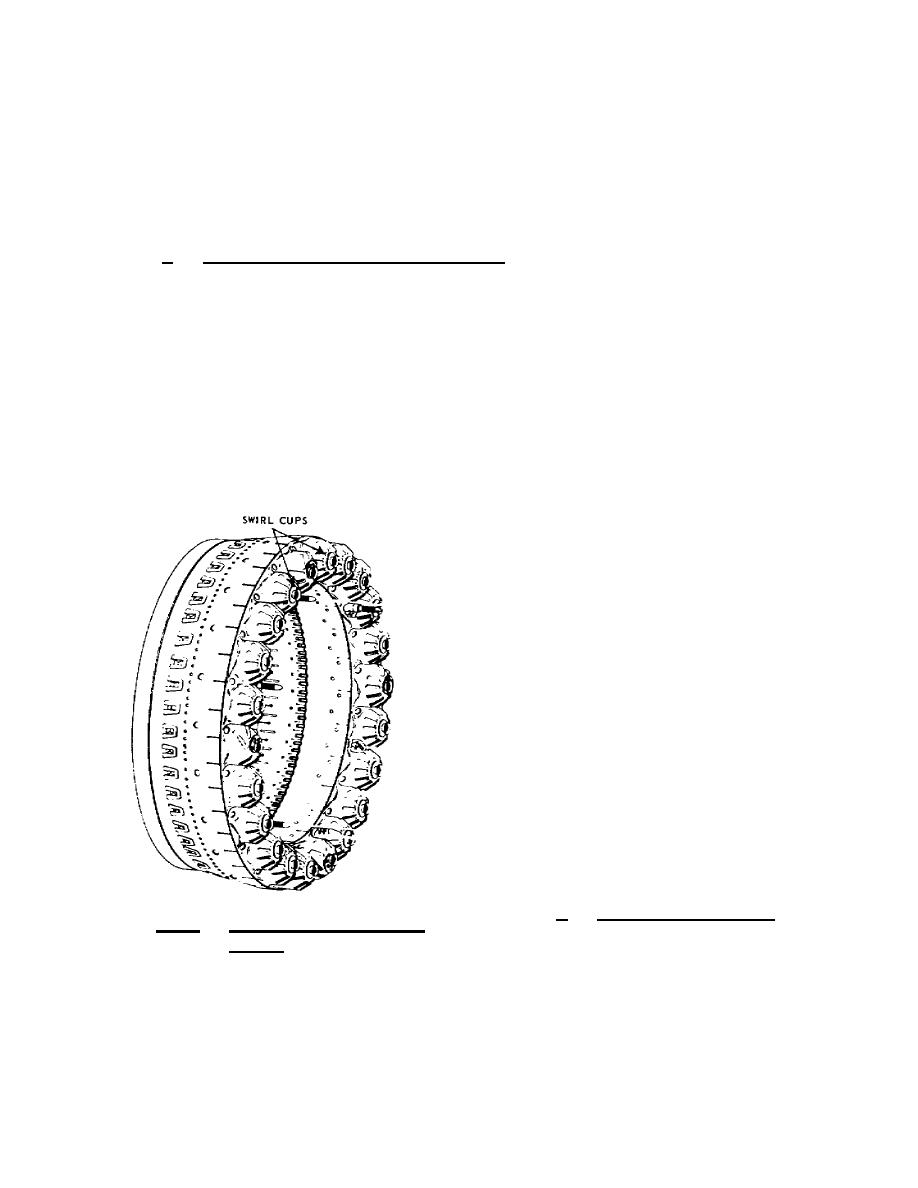
The gases are then directed into the exhaust diffuser, and an
average temperature of the gas stream is measured in this area
(station 9, in figure 4.4). Although this temperature is much lower
than that existing in the turbine inlet area (station 5, in figure
4.4), it is relative and indicative of the temperature at station 5.
The fuel control automatically programs fuel flow, so the maximum
turbine inlet temperature is not exceeded during normal operation.
a. Combustion chamber housing. The T53 has an annular
combustion housing Which is constructed of steel. A flange at the
forward end mates with the aft flange of the compressor diffuser
housing. It is at this point that the engine is split to perform a
hotend inspection. A combustion chamber drain valve is located at
the 6 o'clock position. This valve is spring loaded in the open
position to drain any unburned fuel from the combustor during engine
shutdown after a false or aborted start. During engine operation,
compressed air flowing through the combustion chamber automatically
closes the valve when chamber pressure exceeds outside pressure by
approximately 2 psi. If the drain valve fails to close during engine
operation a power reduction from
air loss will occur. The
stainlesssteel,
annular,
combustion chamber liner is shown
in figure 4.15. The liner
contains a series of holes and
louvers which vary in size,
regulate the flow of pressurized
air into the inner area to
support combustion, and form a
cooling air blanket on the liner
surface. The T53L13 and later
version have twentytwo swirl
cups on the aft end that provide
fuel nozzle access into the
burner zone. Slots in the swirl
cups direct airflow in a pattern
to provide proper fuel
atomization and flame control.
b. Turbine assembly. As
Figure 4.15.
the gases flow rearward from the
Liner.
defector, item 1 in figure 4.16,
they contact the first stage gas
producer turbine nozzle. The gases are accelerated by the nozzles to
impinge upon the open tip blades of the N1 turbine, causing them to
rotate at high speed in a counterclockwise direction. As the gases
pass from the trailing end of the blades, an additional force is



 Previous Page
Previous Page
